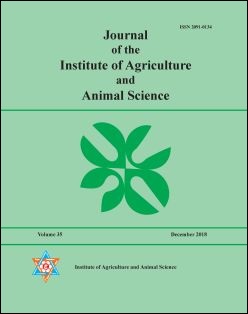Review on the Association of Birth Weight of Crossbred Calf for Dystocia
DOI:
https://doi.org/10.3126/jiaas.v36i1.48433Keywords:
cow, community calves, exotic, non-descript, breeding policiesAbstract
Nepalese policy makers and farmers are fascinated by exotic breeds of livestock species. It is in this pursuit that we have been spending billions to import livestock from different countries. Initially the plan and policies were to select indigenous animals and have them upgraded through cross breeding to improve milk production trait. With time the special idea to scan and select best performing indigenous animals from around the country got sidelined and competition to import pure exotic breeds began. Many issues, most importantly failing to provide standard husbandry, lack of multi utility of male calves have dampened the momentum. Alongside, for breeding involving big exotic sires like Holstein Frisian, Brown Swiss and Jersey with our nondescript dam is potential to dystocia because of relatively large birth weight of crossbred calf. Around 60% of dystocia are of fetal causes and birth weight is one major cause here in Nepal. Dystocia is associated with reduction in milk yield, poor cow fertility, poor health and pre-weaning mortality up to 50 percent. Crossbreed birth weight and dystocia are highly correlated. High occurrence of dystocia was reported with Holstein Frisian sire followed by Brown Swiss and Jersey when these sires were mated with nondescript dams. Proportionate and compatible selection of both sire and dam is important to avoid dystocia. Expected Progeny Differences (EPD) values for birth weight and calving ease would be a key for sire selection.

